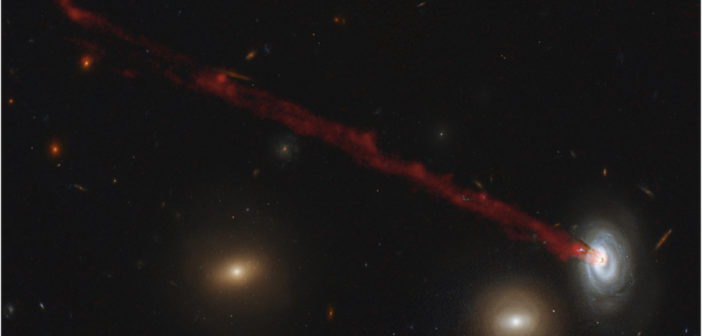The distant Coma Cluster contains over a thousand identified galaxies. The rapid motions of such galaxies in large clusters can drive a process known as ram-pressure stripping, in which gas is torn away from the galaxies as the galaxies speed through the intercluster medium. In the spectacular composite image shown above — created by combining false-color Hubble imaging with Hα data from the ground-based Subaru Suprime-Cam — a remarkable 200,000-light-year-long and extremely narrow (only 5,000 light-years wide) ram-pressure-stripped tail of gas can be seen to stream out from the center of the spiral galaxy D100 in the Coma Cluster. In a new study led by William Cramer (Yale University), a team of scientists has now used deep Hubble imaging to explore this tail in greater detail, particularly studying young stars that have formed in the tail. For more information and beautiful images, check out the paper below!
Citation
“Spectacular Hubble Space Telescope Observations of the Coma Galaxy D100 and Star Formation in Its Ram Pressure–stripped Tail,” W. J. Cramer et al 2019 ApJ 870 63. doi:10.3847/1538-4357/aaefff

1 Comment
Pingback: AAS Nova – New